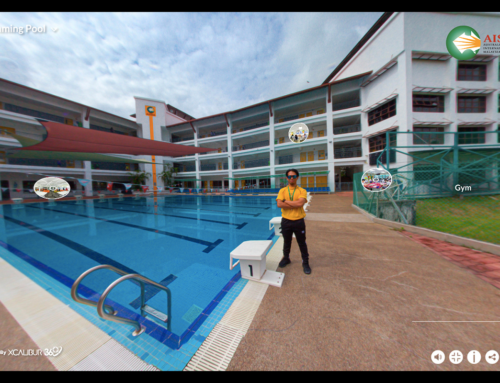Virtual tours were already a staple before the pandemic shut down international borders and restricted travel. Advanced technology and ease of international travel prompted a boom in cross-border transactions, and businesses that rely on a customer’s physical presence – learning institutions, healthcare centres, and the like utilised virtual tours to attract customers even before they step onto the premises.
In terms of international students looking to enrol in a suitable school or if a patient is seeking treatment from a hospital overseas, virtual tours for these establishments can be a great sense of familiarity and comfort for these people even before stepping into the foreign country.

Virtual tours can help children be familiar and comfortable with their school of choice even before the school year commences.
Foundation for success
There are many benefits to having a virtual tour for your business; it is natural you would want to jump straight into procuring one. However, this is a good reminder that jumping into anything blindly may not be a good idea.
Setting up a good virtual tour can be tricky and requires a team of people who have a good understanding of the technology and target audience. No longer do consumers only expect pictures, videos or text for a virtual tour now, but modern virtual tours are of personalised design with the use of 360 technologies, audio and visual guides, multilingual options among other capabilities.
Therefore, if you are new to the virtual tour industry, here are some basic elements of any good virtual tour:
- Understanding audience needs
To attract your target audience, it is vital to understand what they are looking for and aim to achieve from your product or service. Armed with this knowledge, you know which information to highlight for your virtual tour, or to design it in a way to fulfil popular requests from buyers. For example, a university will choose to highlight its recreational premises to entice prospective students looking for a fulfilling university life while a museum would want to showcase its most priceless artefact.
- Ensure it is built to function
A virtual tour is useless if it does not fulfil the role it is given, which is to provide information on your business and letting the consumer experience your premises virtually as in real life. Regular software maintenance and informational updates on any changes of your premises is crucial to ensure a continuity between your virtual and physical tours – setting realistic expectations of your audience.
- Telling your brand story
It has been proven consumers retain more information when it is presented in the form of storytelling rather than hard cold facts. Showcase your brand’s unique offerings through a collection of stories from staff or alumni to present a more real persona of your company rather than a faceless corporation.

The role of a virtual tour is to bring the place to the audience. Hence, it is important to ensure their experience is immersive and similar to a physical tour.
- Building an immersive virtual experience
Aside from high quality visuals and design, the experience of the audience is shaped through their immersion of this virtual world. Options to choose their own pathways in the virtual tour can present this perception. If you are looking to target different communities, provide diverse options such as language preferences and even personalised information which appeals to people of different cultures and ethnicities.
- Explore beyond the facility
For virtual tours designed for learning institutions or real estate where consumers will be spending a significant time of their lives in the area, it is helpful for them to be able to explore their surroundings outside the specific premises. Parents, students and property buyers can feel more at ease if they are able to experience the neighbourhood or surrounding facilities before deciding to move there.
- Call to actions
Your audience has been made aware of your brand, and they are interested in buying your product or service. Where do they go next? This is where you grab the opportunity to channel them towards your applications, physical visits, enquiries and other conversion tools with smartly placed call-to-action buttons throughout the virtual tour.
- Increasing virtual tour visibility
A great virtual tour can only fulfil its purpose when people are aware of it and utilise it. There is a need for good marketing strategies to put your virtual tour out there for the world to see. Be it on your social media pages, integration onto your official website and app, newsletter emails, text messages or paid advertising, your virtual tour must be visible and accessible to pull the audience towards your site.
Made easy with the right people
Knowledge does not equal skill. While you now know what to look out for when setting up a virtual tour for your business, you may not have the skills to execute the plans. Therefore, the need for good partners who are experts in the virtual tour industry can be a great help to a successful programme.
Seeking a qualified and experienced team which specialises in setting up virtual tours for businesses and institutions? Contact us here at info@xcalibur360.com.


